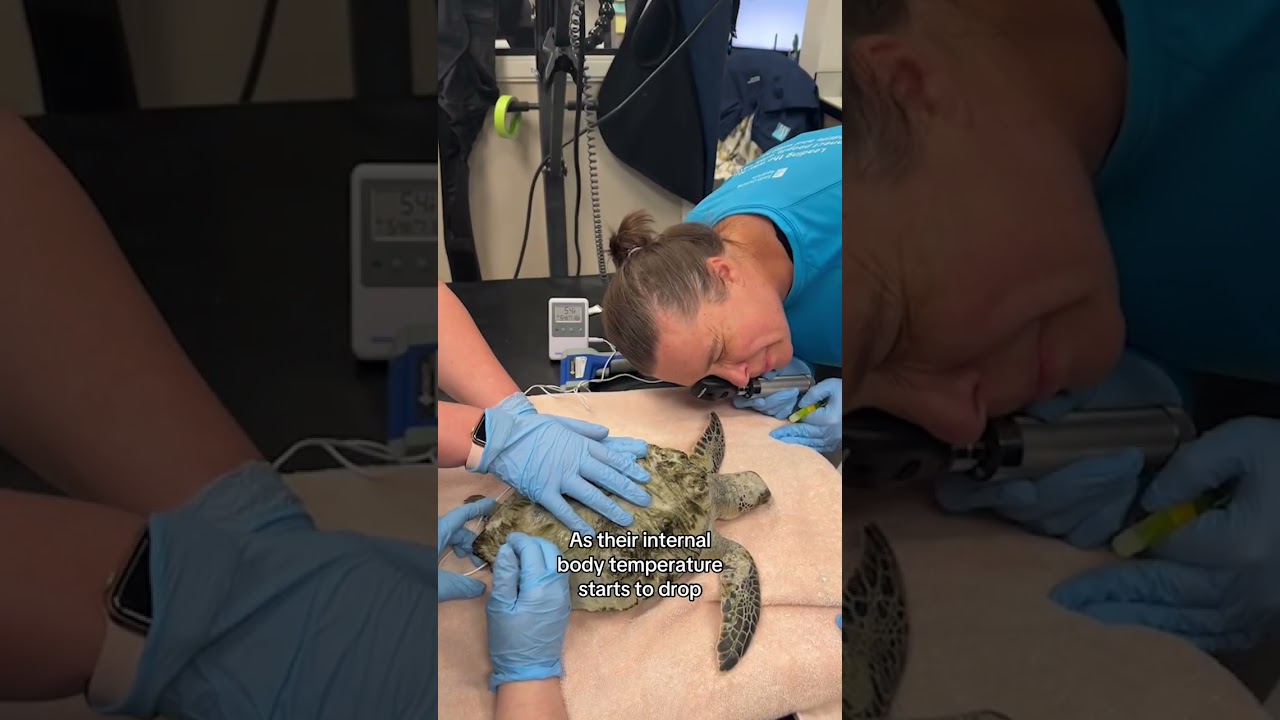- Understanding cold-stunning and its impact on sea turtles
- The physiological effects of cold-stunning on sea turtles
- Rescue and rehabilitation of cold-stunned sea turtles
- The role of wildlife conservation in preventing cold-stunning incidents
- Educating the public about the importance of sea turtle conservation
Cold-stunning is a physiological condition that affects sea turtles when water temperatures plummet below tolerable levels. This phenomenon predominantly occurs in coastal regions during winter months, when sudden temperature drops expose sea turtles to frigid waters. Sea turtles are ectothermic reptiles, meaning their body temperature is regulated by the surrounding environment. When the water becomes too cold, their metabolic processes slow dramatically, resulting in lethargy and incapacitation. Cold-stunned turtles may float on the water’s surface or wash ashore, making them vulnerable to predators and human-related dangers. Understanding cold-stunning is vital for conservationists aiming to mitigate its harmful impact on vulnerable sea turtle populations.
When sea turtles experience cold-stunning, their bodily functions are severely impaired. The nervous system, respiratory system, and circulatory functions are all affected. A cold-stunned turtle becomes sluggish, reducing its ability to seek food and avoid threats. Respiration becomes labored, leading to potential drowning in sea turtles that are unable to lift their heads above water. Additionally, prolonged exposure to cold temperatures can cause organ failure and decrease the turtle’s immune response, making them more susceptible to infections. Swift intervention is crucial to ensure these animals survive and recover after being cold-stunned. Immediate action includes gently retrieving cold-stunned turtles from the water or shore and providing a controlled, warm environment for rehabilitation.
The rescue and rehabilitation of cold-stunned sea turtles form a critical aspect of wildlife conservation efforts. Centers dedicated to the recuperation of these turtles often receive a sudden influx during cold-stunning events, necessitating organized response strategies. Veterinarians and marine biologists undertake initial assessments to evaluate the severity of each turtle’s condition. Rehabilitating turtles involves gradually warming them to avoid shocking their systems further, rehydrating them, and administering necessary medical treatment. Once rehabilitated, turtles are often released back into the wild, ideally in locations where the water temperature is below their critical limits. Data collected during rehabilitation efforts contribute to broader conservation knowledge, aiding in the development of proactive measures and response protocols.
Wildlife conservation plays a pivotal role in reducing the frequency and severity of cold-stunning events. Initiatives such as monitoring sea surface temperatures and tracking migration patterns allow for better prediction of potential cold-stunning occurrences. These efforts equip conservationists with the ability to warn locals and prepare rescue operations in advance. Additionally, conservation strategies emphasize safeguarding the habitats of sea turtles, ensuring they have safe environments to thrive and migrate. Through conservation actions, organizations work towards minimizing anthropogenic threats, such as bycatch from fishing activities and habitat destruction, that compound the risks faced by cold-stunned turtles.
Educating the public about sea turtle conservation is essential for long-term success in safeguarding these creatures from cold-stunning and other threats. Public awareness campaigns can enlighten communities about the critical role sea turtles play in marine ecosystems and the unique challenges they face due to temperature fluctuations and climate change. Encouraging citizen involvement, such as participating in beach patrols to identify cold-stunned turtles or supporting rescue and rehabilitation facilities, builds a societal framework where wildlife protection becomes a collective responsibility. By fostering respect and admiration for sea turtles, the general public can actively contribute to conservation initiatives, ultimately helping to lower the incidence of cold-stunning by supporting environmental sustainability efforts.
*****
Source Description
#aquarium #scaquarium #seaturtle #seaturtles #saveseaturtles #seaturtlerescue #seaturtlehospital #seaturtlebiologist #coldstun #coldstunned


